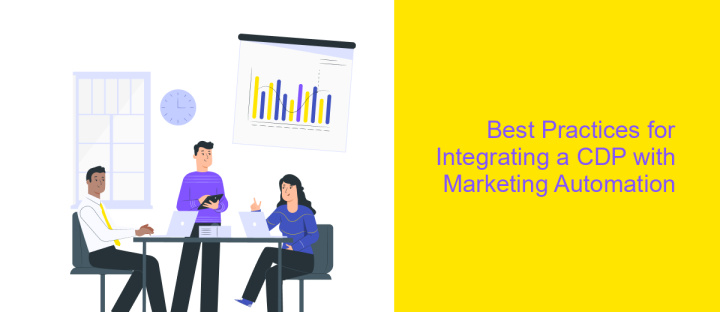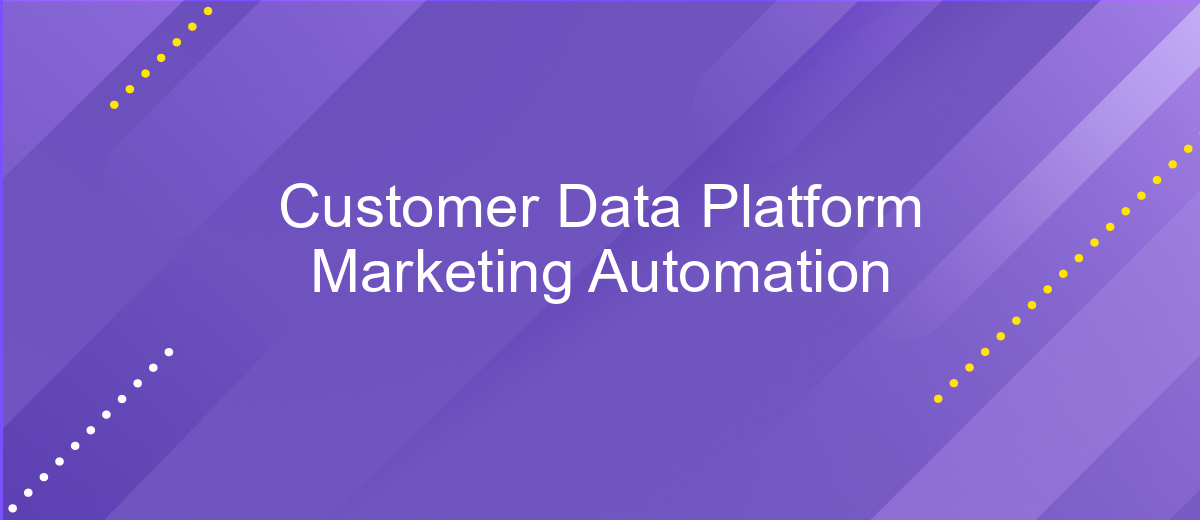Customer Data Platform Marketing Automation
In today's fast-paced digital landscape, businesses are increasingly turning to Customer Data Platforms (CDPs) to streamline their marketing efforts. By integrating CDPs with marketing automation, companies can harness the power of data-driven insights to deliver personalized customer experiences. This synergy not only enhances customer engagement but also drives efficiency and growth, making it an essential strategy for modern marketers seeking to stay ahead of the competition.
Introduction to Customer Data Platforms and Marketing Automation
In today's digital age, businesses are inundated with vast amounts of customer data. Effectively managing and utilizing this data is crucial for personalized marketing efforts. Customer Data Platforms (CDPs) have emerged as an essential tool for consolidating and analyzing customer information from various sources. By creating a unified customer profile, CDPs enable marketers to deliver targeted and relevant messages, enhancing customer engagement and loyalty.
- Data Integration: CDPs aggregate data from multiple channels and systems, providing a comprehensive view of each customer.
- Real-time Analytics: They offer real-time insights, allowing marketers to make data-driven decisions swiftly.
- Personalization: With detailed customer profiles, businesses can craft personalized marketing campaigns.
- Automation: CDPs streamline marketing processes by automating tasks such as segmentation and targeting.
Marketing automation, when combined with CDPs, revolutionizes how businesses interact with their audience. Automation tools leverage the data within CDPs to execute timely and personalized marketing strategies across various channels. This synergy not only enhances efficiency but also ensures that marketing efforts are both strategic and impactful. As a result, businesses can foster stronger connections with their customers, driving growth and success in a competitive marketplace.
Benefits of Integrating a CDP with Marketing Automation

Integrating a Customer Data Platform (CDP) with marketing automation tools offers significant benefits for businesses aiming to enhance their marketing strategies. By combining these technologies, companies can achieve a more comprehensive view of their customers, enabling personalized and targeted marketing campaigns. A CDP aggregates data from various sources, providing a unified customer profile. This integration ensures that marketing automation systems can access up-to-date and accurate customer data, leading to more effective segmentation and personalized communication. As a result, businesses can improve customer engagement, increase conversion rates, and build stronger customer relationships.
Moreover, the integration process can be streamlined with services like ApiX-Drive, which simplifies connecting different platforms without the need for extensive technical expertise. ApiX-Drive facilitates seamless data flow between a CDP and marketing automation tools, reducing the time and effort required to set up and maintain integrations. By leveraging such services, businesses can focus on crafting impactful marketing strategies while ensuring their technological infrastructure supports their goals efficiently. Ultimately, integrating a CDP with marketing automation not only enhances operational efficiency but also drives business growth by delivering more relevant and timely marketing messages.
Challenges in Integrating a CDP with Marketing Automation

Integrating a Customer Data Platform (CDP) with marketing automation tools presents several challenges that businesses must navigate to achieve seamless operations. While the potential for enhanced customer insights and personalized marketing strategies is significant, the integration process is often complex and requires careful planning and execution.
- Data Consistency: Ensuring that data from various sources is consistent and accurate can be difficult, as discrepancies may arise from different data formats and entry errors.
- System Compatibility: Many organizations struggle with integrating CDPs with existing marketing automation systems due to compatibility issues, requiring custom solutions or middleware.
- Privacy Compliance: Adhering to privacy regulations such as GDPR and CCPA is crucial, yet integrating systems can complicate data governance and compliance efforts.
- Resource Allocation: The integration process demands significant time and resources, which can strain IT departments and delay other critical projects.
Despite these challenges, businesses that successfully integrate a CDP with marketing automation platforms can unlock powerful capabilities, such as real-time customer engagement and improved marketing ROI. Addressing these hurdles with strategic planning and the right technological support can pave the way for a more efficient and effective marketing ecosystem.
Best Practices for Integrating a CDP with Marketing Automation

Integrating a Customer Data Platform (CDP) with marketing automation tools can significantly enhance your marketing strategies by providing a unified view of customer data. To achieve seamless integration, it's essential to ensure data consistency across platforms. Begin by aligning your data structures and formats to prevent discrepancies and data silos.
Next, establish clear objectives for the integration. Define what you aim to achieve, whether it's improved customer segmentation, personalized marketing campaigns, or enhanced analytics. Having a clear vision will guide the integration process and help in measuring success.
- Ensure data privacy and compliance with regulations like GDPR.
- Regularly update and clean your data to maintain its accuracy.
- Leverage AI and machine learning for advanced data insights.
- Train your team to effectively use the integrated system.
Finally, continuously monitor and optimize the integration. Analyze performance metrics to identify areas for improvement. Regular audits and updates will ensure the system remains efficient and aligned with your marketing goals. By following these best practices, you can maximize the benefits of integrating a CDP with marketing automation.
- Automate the work of an online store or landing
- Empower through integration
- Don't spend money on programmers and integrators
- Save time by automating routine tasks
Conclusion
In conclusion, the integration of Customer Data Platforms (CDP) with marketing automation tools has revolutionized the way businesses interact with their customers. By centralizing customer data, companies can create more personalized and efficient marketing strategies, leading to increased customer engagement and loyalty. The synergy between CDPs and automation tools enables marketers to deliver the right message at the right time, significantly enhancing the customer experience.
Moreover, the seamless integration of these systems is crucial for maximizing their potential. Services like ApiX-Drive facilitate this process by providing efficient and user-friendly solutions for connecting various platforms without requiring extensive technical expertise. This empowers businesses to quickly adapt to changing market dynamics and leverage their data more effectively. As technology continues to evolve, the role of CDPs in marketing automation will only grow, making it imperative for companies to invest in robust integration solutions to stay competitive in the digital landscape.
FAQ
What is a Customer Data Platform (CDP) and how does it differ from a CRM?
How can marketing automation benefit from a CDP?
What are some common challenges when implementing a CDP for marketing automation?
How does ApiX-Drive facilitate the integration of a CDP with marketing automation tools?
What should be considered when choosing a CDP for marketing automation?
Strive to take your business to the next level, achieve your goals faster and more efficiently? Apix-Drive is your reliable assistant for these tasks. An online service and application connector will help you automate key business processes and get rid of the routine. You and your employees will free up time for important core tasks. Try Apix-Drive features for free to see the effectiveness of the online connector for yourself.


